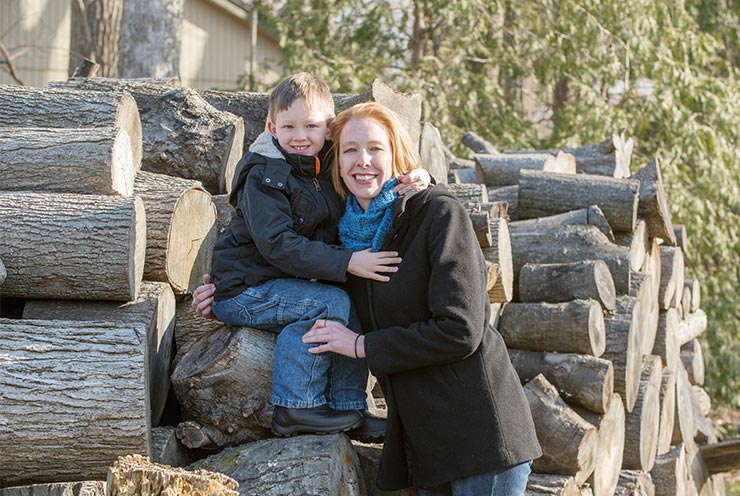Living with Cancer. I’m a Warrior.
Read about Erika Lojko’s fight against triple negative breast cancer and her motivation to live.
When you have breast cancer, we perform a variety of tests to diagnose what type of the disease you have and what stage it’s in. These factors and others help us determine the treatment options that are likely to work best for you.
We test all breast cancer tumors for groups of proteins, called receptors. We test for three types of these receptors:
These receptors are what allow tumors to respond to the targeted breast cancer therapies we use. If your breast cancer tumor doesn’t have enough of the three receptors — or if it has none of these receptors at all — we say it’s triple-negative breast cancer.
Triple-negative breast cancer is one of the more difficult types to treat. It doesn’t respond well to treatments like biological therapy and hormone therapy, which are more targeted therapies that work for other types of breast cancer.
It may be difficult to treat, but it’s not impossible. We have treatment options for triple-negative breast cancer, and we’re ready to put them to work. We understand what it takes to beat triple-negative breast cancer, and we’re here to help you do just that.
Read about Erika Lojko’s fight against triple negative breast cancer and her motivation to live.

Triple-negative breast cancer tends to be more aggressive compared with other types of breast cancer. This means triple negative breast cancer:
Part of the reason for this aggressive behavior is the lack of treatments that target this type of cancer cells. This behavior may contribute to the poorer prognosis for patients with triple-negative breast cancer. These patients have a somewhat lower average survival rate for the first five years after their diagnosis than patients with other forms of breast cancer. But this difference decreases and eventually disappears after five years following diagnosis.
Triple-negative breast cancer also can be harder to detect during a mammogram than other types of breast cancer. This is because the triple-negative breast cancer cells tend to look and grow more like normal breast cells than other types of cancer.
Anyone can get triple-negative breast cancer. In fact, researchers have noted that about 10 to 20 percent of all cases of breast cancer in the United States test negative for ER, PR, and HER2. But some people are at higher risk than others for the disease, such as:
Research into the risk factors and treatment of triple-negative breast cancer remains a high priority for our cancer team. We are part of a research and training program that spans the globe from Michigan all the way to Ghana and Ethiopia, and we continue to make progress into better screening and treatment options.
For other types of breast cancer, we typically recommend that you start with one of the targeted biological or hormone therapies we offer. But triple-negative breast cancer doesn’t respond well to these therapies.
Instead, we use a combination of treatments for triple-negative breast cancer, including:
Triple-negative breast cancer responds particularly well to chemotherapy. In fact, some evidence suggests that it may actually respond better to chemotherapy than other forms of breast cancer.
We often provide chemotherapy treatment after surgery to reduce the risk of breast cancer returning. We call this approach adjuvant chemotherapy. In some cases, we recommend chemotherapy before surgery to shrink breast cancer tumors and preserve as much healthy breast tissue as possible. We call this approach neoadjuvant chemotherapy. You and your doctor will discuss these options and create a treatment plan that’s right for you.
We use cookies to improve your website experience. By using this site, you agree to our Terms of Use. Read our Internet Privacy Statement to learn what information we collect and how we use it.